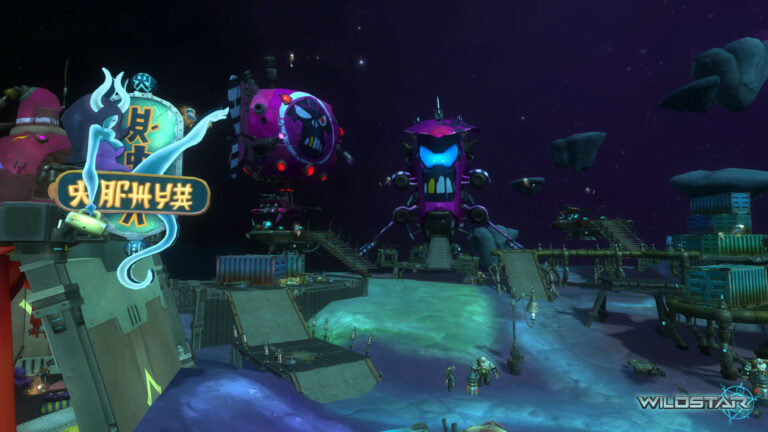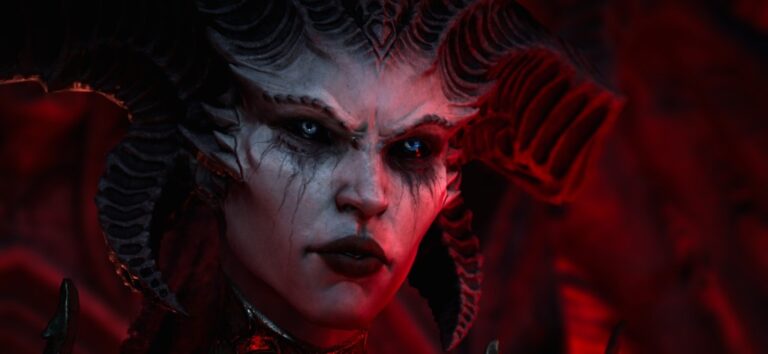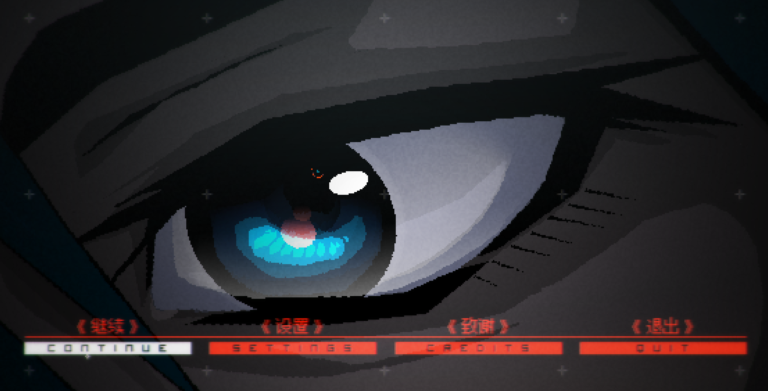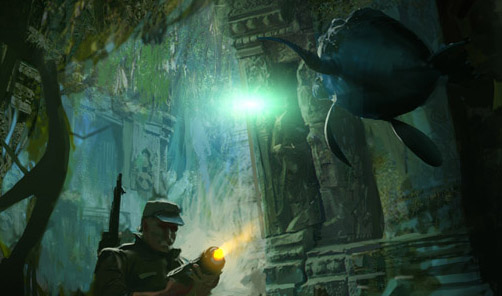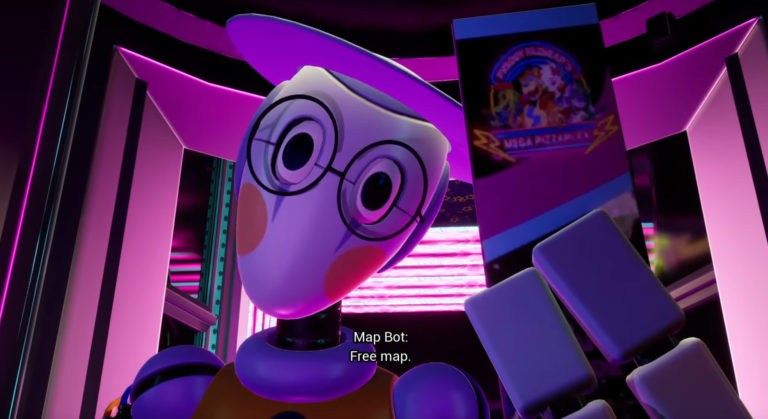Truth is what we’re best known for and I’d like to start this off with an honest one: Testament: The Order of High Human is expected to be perfect and is not. It is a beautiful, gorgeous game with deep lore and very fun puzzles with some decent combat. It has an old school scrappy developer vibe to it that makes a lot of old games endearing with graphics that appeal to the modern eyes. We don’t use numerical rankings because it’s sitting on 6/10 on Steam right now and is at “All Reviews: Mixed” on a sample size of roughly ~20. I don’t think games that have the artistic depth that Testament does deserve to be put on a numerical scale where anything below 8 is a waste of your money. There’s an audience out there for Testament who love this style of game and when it comes to…
Tim Cain is known as part of the legendary trio behind Fallout 1 & 2. He also worked at Troika and programmed Vampire: The Masquerade and one of my favorite games Arcanum. He recently released a video lambasting Carbine and NCSoft while disclosing some deep interpersonal issues at Carbine. Tim’s video is authentic and his recount is accurate by all means. I covered WildStar heavily from 2011 onward and the stories back then were well known. Carbine was a toxic and unhealthy workplace which had the potential to release the best MMO of the golden age but instead failed with 9 years of development time and a further four post-launch to win back everyone ala Final Fantasy XIV. The video is very misleading in some ways. It argues that there was a lack of unified vision. That’s true, but it was also completely the fact that everyone at Carbine was…
Lore and worldbuilding have the power to ignite passion in players and fuel an immersive experience. At their best, lore-driven games create a sense of mystery and discovery that motivate players to explore each part of the world. However, some recent games have exploited lore and ambiguity primarily as a marketing tactic, rather than using it to enhance gameplay or build meaning. This phenomenon highlights the need for more balanced, player-centered design. When developers commit to transparency and ethical practices, lore can be used to strengthen community trust and craft impactful stories. But that depends on valuing immersion and artistry over profits alone. We’ll dive into the history of lore focused games, what happened and where to go from here. This is all inclusive of the entire indie scene, even if there’s a heavy emphasis on mascot horror. It makes the best example and we’ll avoid referencing mascot horror to…
Diablo IV has a very anticlimactic ending that may leave you scratching your head if the game is really over or what has occurred. It may not make a lot of sense at first, but there’s a few things at play when it comes to the ending. We’ll go first over the ending itself literally then take a figurative look at what all of this means for Sanctuary. Quick Note: For the backstory on Lilith, Inarius and Sanctuary see sort of “Part 1” which goes over the events before the game. We’re going to dive right into the ending, which kicks off towards the very end of Diablo IV. How Does Diablo IV End? Inarius and Lilith were both, from the player character’s point of view, insane from their time exiled. Inarius had been in hell for a few millennia per Lorath (which holds the canon from the books still)…
Players can be quite confused at who Inarius and Lilith when they have almost no exposure to either of them before Diablo IV’s launch. Inarius is a rogue angel and Lilith is a rogue demon who created Sanctuary as a means to escape the Eternal Conflict between angels and demons over the Worldstone (the focus of Diablo II). They birthed the nephalem which eventually over time became humanity. That’s everything. We have a ton of technical lore history below, but if you’re just curious who they are that’s about the best summary I think you can have. When they introduce themselves in the game as the mother and father of Sanctuary, they’re not lying. There’s a lot more technical info on the situation than that, but we first need to talk about what came about to cause them to create Sanctuary. We’ll then go into a mixed bag of topics…
SIGNALIS is sort of an enigma of a game. It’s a great recapture of the feeling of the “5th generation” era of gaming and is actually a lot of fun. While its considered a survival-horror game, its more akin to an action-stealth game like Metal Gear Solid and less like Resident Evil per se. However, it has a very interesting, wild and convoluted story that needs a bit of explanation. Another thing to note is a three person team worked on this game. I touch a bit on this in my article about meetings at video game studios, but a lot of the game is clearly intentional from a development standpoint. Which is why SIGNALIS feels so buttoned up. SIGNALIS Is an Analog Horror Simulator That’s it, that’s as simple as it is. Everything in the game is built around a dream like experience of that 5th generation era of…
FAITH is a homage to retro gaming and The Exorcist with a deep story, diverse gameplay, and rich lore. The trilogy follows John Ward’s battle against demonic possession and eldritch horrors. In the final installment, he confronts the cult’s activities and faces pivotal choices. The game combines horror tropes, offering a nostalgic and immersive experience.
Halo is not the prime universe in the Bungie world; Marathon is. Which may surprise some who first found Bungie either through ONI or Halo, but the core timeline for the entire series rests with one of their earlier games: Marathon and Pathways into Darkness. Not only are these two games very important to the lore of both Halo and Destiny, but they’re also just as lore filled as those two games, if not more. Where Destiny has very little lore, PiD and Marathon have intense amounts of lore which to this day is studied and thought on. I’d like to propose a simplified version of the Bungie Multiverse Mythos and a simplified Timeline below that walks through the major highlights and plot points that you’d otherwise have to dig around for. Most articles focus on easter eggs and lore tidbits, but I want to focus on what the overall…
Dive into the intricate world of Inscryption, unraveling its complex story and in-game secrets without spoiling the ongoing ARG elements.
Five Nights at Freddy’s Security Breach is the first 3D action survival horror game in the FNAF series. You take on the role of Gregory who wakes up inside of Glamrock Freddy in a Pizzaplex that is in a state of chaos. We’ve compiled some tips below to help you survive the night along with how to obtain the game’s various endings. The biggest tip of all is to understand that the game is linear but not completely linear. Areas are gated past passes that are only given out at certain times and in certain areas. However, how you upgrade Freddy and how you proceed can be completely up to you. You can see your available missions anytime on the watch. Scott Cawthon retired which means that the series is moving on now with him taking a less hands on approach. However, it’s very clear in Security Breach that Steel…


